926
Ten of the most dangerous cities in the world
If you plan your trip, try to avoid these ten cities - they are dangerous to your health. List of cities each year of Blacksmith Institute.

10. Sumgait, Azerbaijan

This city is located on the coast of the Caspian Sea, 30 km north of the capital of Azerbaijan, Baku. Resident in the nearly 260 thousand people.
Even in Soviet times it housed more than 40 factories producing chemicals, the main ones are still working - software
"Organic synthesis", "Khimprom", Tube and aluminum plants. Each year, the release of harmful emissions into the atmosphere from the chimneys of factories,
generating a synthetic rubber, chlorine, aluminum, detergents, and pesticides, was about 70-120 tons. Now they are smaller, but the city
it does not help - short of what is collected in the ecological garbage from the time of communism, which are only traces of mercury in
natural water bodies. All this could not but affect the health of residents. The level of cancer only here on 22-51
% Higher than in other urban Azerbaijan and mortality - 8%, but most likely too low and this data.
9. Linfen, China
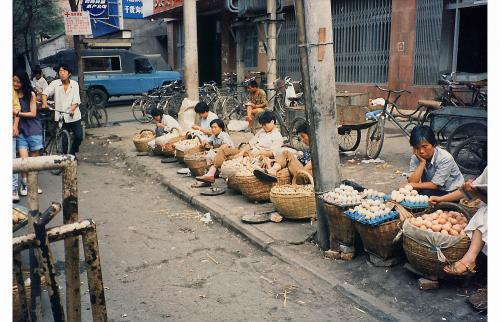
Once, during the reign of Emperor Yao (XXIV century BC. E.) To
It was the site of modern Linfen Pingyao ancient capital. Today
this city is difficult to place the imperial court. Particles of ash
air, carbon dioxide, nitrogen okisid, sulfur dioxide, arsenic and lead -
this is not the air, which I would like to breathe the ruler of the country. A simple
workers of the coal-producing plants can not be choosers. There
2/3 of coal produced all over the country, as you remember, coal -
main source of energy in China. It is believed that the number of
potentially affected by deviations from the environmental standards in this
the city of three million people. Bronchitis, pneumonia and cancer
there are too frequent lung disease. The Chinese authorities have promised that
more than half of their coal mining companies will be closed by the
end of this year, and many people, in addition to health may be undermined
and unemployment is still expected.
8. Tyanin China

Another Chinese city is dangerous to stay - Tyanin, although the population
the city of Linfen in comparison with not so much, "only" about 750
thousands of people. 140 thousand of them are registered doctors, people with
serious illnesses. The presence in the air and soil and other lead
heavy metals accompanies the mining companies with
low technologies used, especially in the absence of any
measures to combat pollution. The content of harmful
substances in the air of the city in eight to ten times the maximum
valid national standards. Local residents too often
discover the most serious disease - encephalopathy, debility,
stunted growth, vision problems, mutations in humans, especially
this applies to babies who are born with terrible birth
defects.
7. Sukinda, India
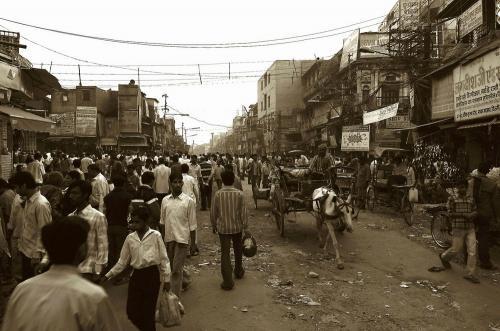
Sukinda Valley - a place in which there is 97% of the Indian
deposits of chromite ore. Twelve local ore mines
mined by open method. After all, what interests
mining companies extracted from this ore, waste production just
remain on the surface of the earth. Today, it is 30 million tons
waste scattered along the banks of the river Brahmani. Naturally, the water
It poisoned mainly hexavalent chlorine, then it is twice
more than national standards allow India. Meanwhile, water
Brahmani - the only local source of water, which is used
day 2, 6 million local residents. Gastrointestinal bleeding,
tuberculosis and asthma - common their illness. A large percentage of infertility and
birth defects. International voluntary organizations
Health think that 84, 75% of deaths in the city associated with
its ecology.
6. Vapi, India
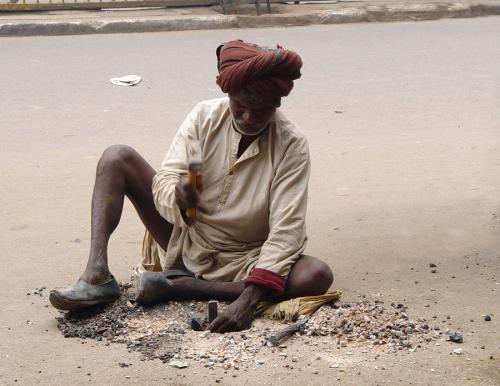
The entire population of the city - about 71 thousand people live in the area
increased health risks. Scientific studies have shown that
Today there is no way that could clean this place from all
existing types of pollution in it. Vapi City - located at the end
"India's Golden Corridor" (400-kilometer-long belt of industrial zones State
Gujarat). Not only that WAPI has its mainly private
enterprise (read: not spending any of the rupee to the treatment plant), here
also dumped industrial waste from other cities 'corridor'. Here in
terrible amount of accumulated waste oil processing enterprises,
textiles, production of paints, fertilizers, leather products,
chlorine-containing substances. Poisons in the form of heavy metals, cyanides,
pesticides, mercury get into groundwater and contaminate the river -
water sources in the city. The river Colac in Vapi Vapi and below
unable to sustain biological life - it all dies. A
residents drink it because the nearest source of water other
more than a mile. The air and water of the city - the local causes of disease
residents. "Bouquet" of their disease varied - and dermatitis, and carcinomas,
oncology, infertility and birth defects.
5. Oroya, Peru

Since 1922 the city's population - adults and children - is exposed
the effects of hazardous waste produced by the American
metallurgical plant, owned by the corporation «Doe Run
Company ». And the main danger is the lead - its rules
content in the blood is already elevated in 99% of newborn children in the city, and to
ten years of their life of lead in the body exceeds
the permitted limit of three times. Soil contaminated with arsenic and cadmium. In
ten times exceeded standards for levels of sulfur dioxide in the air - in
resulting acid (containing sulfur dioxide) rains almost etched
all the vegetation in the city. 35 thousand patients a wide variety
diseases of people living in this city.
4. Dzerzhinsk, Russia

Russia - a country with the world's greatest number of "dirty" cities, but
Top Ten "most polluted" were only two. One of them - the former village
Rastyapino, who in 1930 received the status of the city and a new name in
honor of "Iron Felix". During the "cold war" became Dzerzhinsk
center for the production of chemical products in Russia, it is here
producing sarin, lewisite, mustard gas, hydrogen cyanide, dioxins.
A sufficiently large part of the production is preserved to this day, but
Most hazardous waste litter the ground water and the environment to
1930 to 1998 - a nearly 300 000 tonnes of chemical waste, including
There are 190 types of chemicals. Some settlers
the level of phenol exceeds the norm - it is terrible to say - 17 million times -
This brought the city a bad name, he is mentioned in the "Book of Records
Guinness "as the most chemically polluted city. As part
industries in the city stopped, the level of local groundwater as a whole
increased, and that the soil poisons - arsenic, mercury, lead, dioxins
- To wash these waters and into the waters of the river Oka. And this,
Incidentally, the source of water for the Nizhny Novgorod. The index of mortality in
Dzerzhinsk index now exceeds the birth rate by 260%. Men live
then on average 42 years old, women - 47, and lives today in this town 300
thousands of people, that says everything.
3. Norilsk, Russia
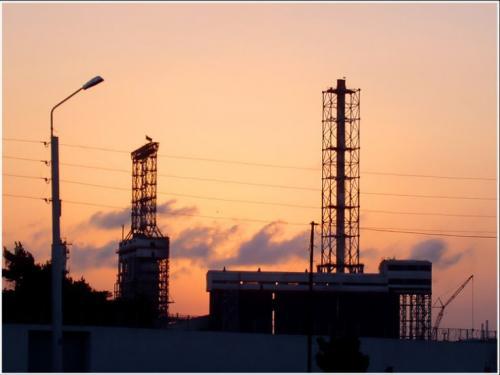
A beautiful city, built up houses, "Stalinist" type, is located behind
Arctic Circle 90 km from the Yenisei River. Living in this city
nearly 140 thousand people. Drove into the city to foreigners (except
Belarusians) since 2001 only by special permission. Home
enterprise of the city - "Norilsk Nickel", it and other mills
mined copper, nickel (20% of world production), cobalt (10% of
of world production), precious metals, palladium (35% of the world
production), osmium, platinum (25% of world production), gold, silver,
iridium, rhodium (20% of world production), ruthenium. And incidentally produce
selenium, technical sulfur, tellurium, and sulfuric acid. 95% nickel and
cobalt, 55% of the copper produced in Russia Norilsk. City country
very important. But for residents of all these means of production
increased content in the air, water and soil is very dangerous
strontium-90, cesium-137, sulfur dioxide, heavy metals (nickel, copper,
cobalt, lead, selenium), nitrogen oxides and carbon (2% of the world
emissions), phenols, hydrogen sulfide. It is difficult to understand what it is?
Well, okay, that's more than understandable: in a radius of 50 kilometers from the "Norilsk
Nickel "there was not a living tree. This is a desert. In which
people live and work. The most common serious disease in
the city - it is lung cancer. And now you know why since 2001 here
do not let foreigners in July 2001 killed three foreign
tourists caught in the gas emissions of one of the factories.
2. Chernobyl, Ukraine

Another post-Soviet, now belonging to Ukraine, the city experienced
the biggest nuclear catastrophe on Earth. That is why all that
you could say about it, we have said that we can not - we do not all
We know. But we know that no matter who was right and who is wrong in
the disaster, no one is immune from the new man-made disasters, and,
Nevertheless, nowhere to us today from the nuclear energy not escape - we
very much on our planet. As a result of the accident
agricultural use was withdrawn about 5 million hectares
land around the plant and created a 30-kilometer exclusion zone,
destroyed and buried (read: buried heavy machinery), hundreds of small
settlements. Meanwhile, the amount of data affected by the
consequences of the accident vary. Blacksmith Institute has 5
millions of people on whose health they are affected and can still
effect. References published in the post-Soviet countries, they write that
in the accident killed 1 person, 134 people who were at the station during
the explosion suffered from radiation sickness, 28 of them died. Serious
the radiation dose received about 60 thousand liquidators several
dozens of deaths could be related to exposure. Of these 60 thousand
people today died about 5000 - from different reasons,
conclusions of doctors from death, no one was written died of
the effects of increased radiation.
Yet the truth, as always, is somewhere in between, and we are now quietly
See photos "alienated the city" on the Internet. It's hard to imagine it
to imagine, but in Ukraine there are tourist, stalker, firms that offer to visit the city - the victim man-made disaster.
But bear to look at pictures of children who are born with defects,
associated with mutations of genes in the body - in the genes of children "of Chernobyl»
seven times more mutations than other children - we can not. And not
will. And, although rather than later after the departure of parents from Chernobyl was born
the child, the fewer the mutations observed in his genes, we remember,
that the achievements of our civilization are not only good, and we need
be very careful of anything that might pose a threat to life and
human health.
1. Kabwe, Zambia
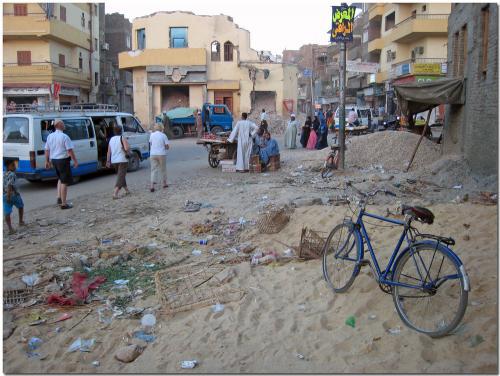
In 1922, the Zambian town of deposits of lead were discovered. In
While Zambia was a British colony called Northern and
Rhodesia. What happened with the local population in the lead mines and
next to them no one cared. Today, the mines and mills closed, but
lead and cadmium in the environment here is still
astronomical. The average concentration of lead in the body of local
children 5-10 times higher than the legal limit - devices for
blood tests do not provide such figures, and in fact can not be
used for the analysis. Contaminated soil, contaminated water - it's dangerous
even to breathe - in a city that is home to 225,000 people, it is often
dusty - it means poisonous dust gets into the human body with
air is dangerous to anyone swimming in reservoirs located in
within the 20-kilometer zone around the city.
I do not know what the right to finish this post. Let's just say: Take care of your home.

10. Sumgait, Azerbaijan

This city is located on the coast of the Caspian Sea, 30 km north of the capital of Azerbaijan, Baku. Resident in the nearly 260 thousand people.
Even in Soviet times it housed more than 40 factories producing chemicals, the main ones are still working - software
"Organic synthesis", "Khimprom", Tube and aluminum plants. Each year, the release of harmful emissions into the atmosphere from the chimneys of factories,
generating a synthetic rubber, chlorine, aluminum, detergents, and pesticides, was about 70-120 tons. Now they are smaller, but the city
it does not help - short of what is collected in the ecological garbage from the time of communism, which are only traces of mercury in
natural water bodies. All this could not but affect the health of residents. The level of cancer only here on 22-51
% Higher than in other urban Azerbaijan and mortality - 8%, but most likely too low and this data.
9. Linfen, China

Once, during the reign of Emperor Yao (XXIV century BC. E.) To
It was the site of modern Linfen Pingyao ancient capital. Today
this city is difficult to place the imperial court. Particles of ash
air, carbon dioxide, nitrogen okisid, sulfur dioxide, arsenic and lead -
this is not the air, which I would like to breathe the ruler of the country. A simple
workers of the coal-producing plants can not be choosers. There
2/3 of coal produced all over the country, as you remember, coal -
main source of energy in China. It is believed that the number of
potentially affected by deviations from the environmental standards in this
the city of three million people. Bronchitis, pneumonia and cancer
there are too frequent lung disease. The Chinese authorities have promised that
more than half of their coal mining companies will be closed by the
end of this year, and many people, in addition to health may be undermined
and unemployment is still expected.
8. Tyanin China

Another Chinese city is dangerous to stay - Tyanin, although the population
the city of Linfen in comparison with not so much, "only" about 750
thousands of people. 140 thousand of them are registered doctors, people with
serious illnesses. The presence in the air and soil and other lead
heavy metals accompanies the mining companies with
low technologies used, especially in the absence of any
measures to combat pollution. The content of harmful
substances in the air of the city in eight to ten times the maximum
valid national standards. Local residents too often
discover the most serious disease - encephalopathy, debility,
stunted growth, vision problems, mutations in humans, especially
this applies to babies who are born with terrible birth
defects.
7. Sukinda, India

Sukinda Valley - a place in which there is 97% of the Indian
deposits of chromite ore. Twelve local ore mines
mined by open method. After all, what interests
mining companies extracted from this ore, waste production just
remain on the surface of the earth. Today, it is 30 million tons
waste scattered along the banks of the river Brahmani. Naturally, the water
It poisoned mainly hexavalent chlorine, then it is twice
more than national standards allow India. Meanwhile, water
Brahmani - the only local source of water, which is used
day 2, 6 million local residents. Gastrointestinal bleeding,
tuberculosis and asthma - common their illness. A large percentage of infertility and
birth defects. International voluntary organizations
Health think that 84, 75% of deaths in the city associated with
its ecology.
6. Vapi, India

The entire population of the city - about 71 thousand people live in the area
increased health risks. Scientific studies have shown that
Today there is no way that could clean this place from all
existing types of pollution in it. Vapi City - located at the end
"India's Golden Corridor" (400-kilometer-long belt of industrial zones State
Gujarat). Not only that WAPI has its mainly private
enterprise (read: not spending any of the rupee to the treatment plant), here
also dumped industrial waste from other cities 'corridor'. Here in
terrible amount of accumulated waste oil processing enterprises,
textiles, production of paints, fertilizers, leather products,
chlorine-containing substances. Poisons in the form of heavy metals, cyanides,
pesticides, mercury get into groundwater and contaminate the river -
water sources in the city. The river Colac in Vapi Vapi and below
unable to sustain biological life - it all dies. A
residents drink it because the nearest source of water other
more than a mile. The air and water of the city - the local causes of disease
residents. "Bouquet" of their disease varied - and dermatitis, and carcinomas,
oncology, infertility and birth defects.
5. Oroya, Peru

Since 1922 the city's population - adults and children - is exposed
the effects of hazardous waste produced by the American
metallurgical plant, owned by the corporation «Doe Run
Company ». And the main danger is the lead - its rules
content in the blood is already elevated in 99% of newborn children in the city, and to
ten years of their life of lead in the body exceeds
the permitted limit of three times. Soil contaminated with arsenic and cadmium. In
ten times exceeded standards for levels of sulfur dioxide in the air - in
resulting acid (containing sulfur dioxide) rains almost etched
all the vegetation in the city. 35 thousand patients a wide variety
diseases of people living in this city.
4. Dzerzhinsk, Russia

Russia - a country with the world's greatest number of "dirty" cities, but
Top Ten "most polluted" were only two. One of them - the former village
Rastyapino, who in 1930 received the status of the city and a new name in
honor of "Iron Felix". During the "cold war" became Dzerzhinsk
center for the production of chemical products in Russia, it is here
producing sarin, lewisite, mustard gas, hydrogen cyanide, dioxins.
A sufficiently large part of the production is preserved to this day, but
Most hazardous waste litter the ground water and the environment to
1930 to 1998 - a nearly 300 000 tonnes of chemical waste, including
There are 190 types of chemicals. Some settlers
the level of phenol exceeds the norm - it is terrible to say - 17 million times -
This brought the city a bad name, he is mentioned in the "Book of Records
Guinness "as the most chemically polluted city. As part
industries in the city stopped, the level of local groundwater as a whole
increased, and that the soil poisons - arsenic, mercury, lead, dioxins
- To wash these waters and into the waters of the river Oka. And this,
Incidentally, the source of water for the Nizhny Novgorod. The index of mortality in
Dzerzhinsk index now exceeds the birth rate by 260%. Men live
then on average 42 years old, women - 47, and lives today in this town 300
thousands of people, that says everything.
3. Norilsk, Russia

A beautiful city, built up houses, "Stalinist" type, is located behind
Arctic Circle 90 km from the Yenisei River. Living in this city
nearly 140 thousand people. Drove into the city to foreigners (except
Belarusians) since 2001 only by special permission. Home
enterprise of the city - "Norilsk Nickel", it and other mills
mined copper, nickel (20% of world production), cobalt (10% of
of world production), precious metals, palladium (35% of the world
production), osmium, platinum (25% of world production), gold, silver,
iridium, rhodium (20% of world production), ruthenium. And incidentally produce
selenium, technical sulfur, tellurium, and sulfuric acid. 95% nickel and
cobalt, 55% of the copper produced in Russia Norilsk. City country
very important. But for residents of all these means of production
increased content in the air, water and soil is very dangerous
strontium-90, cesium-137, sulfur dioxide, heavy metals (nickel, copper,
cobalt, lead, selenium), nitrogen oxides and carbon (2% of the world
emissions), phenols, hydrogen sulfide. It is difficult to understand what it is?
Well, okay, that's more than understandable: in a radius of 50 kilometers from the "Norilsk
Nickel "there was not a living tree. This is a desert. In which
people live and work. The most common serious disease in
the city - it is lung cancer. And now you know why since 2001 here
do not let foreigners in July 2001 killed three foreign
tourists caught in the gas emissions of one of the factories.
2. Chernobyl, Ukraine

Another post-Soviet, now belonging to Ukraine, the city experienced
the biggest nuclear catastrophe on Earth. That is why all that
you could say about it, we have said that we can not - we do not all
We know. But we know that no matter who was right and who is wrong in
the disaster, no one is immune from the new man-made disasters, and,
Nevertheless, nowhere to us today from the nuclear energy not escape - we
very much on our planet. As a result of the accident
agricultural use was withdrawn about 5 million hectares
land around the plant and created a 30-kilometer exclusion zone,
destroyed and buried (read: buried heavy machinery), hundreds of small
settlements. Meanwhile, the amount of data affected by the
consequences of the accident vary. Blacksmith Institute has 5
millions of people on whose health they are affected and can still
effect. References published in the post-Soviet countries, they write that
in the accident killed 1 person, 134 people who were at the station during
the explosion suffered from radiation sickness, 28 of them died. Serious
the radiation dose received about 60 thousand liquidators several
dozens of deaths could be related to exposure. Of these 60 thousand
people today died about 5000 - from different reasons,
conclusions of doctors from death, no one was written died of
the effects of increased radiation.
Yet the truth, as always, is somewhere in between, and we are now quietly
See photos "alienated the city" on the Internet. It's hard to imagine it
to imagine, but in Ukraine there are tourist, stalker, firms that offer to visit the city - the victim man-made disaster.
But bear to look at pictures of children who are born with defects,
associated with mutations of genes in the body - in the genes of children "of Chernobyl»
seven times more mutations than other children - we can not. And not
will. And, although rather than later after the departure of parents from Chernobyl was born
the child, the fewer the mutations observed in his genes, we remember,
that the achievements of our civilization are not only good, and we need
be very careful of anything that might pose a threat to life and
human health.
1. Kabwe, Zambia

In 1922, the Zambian town of deposits of lead were discovered. In
While Zambia was a British colony called Northern and
Rhodesia. What happened with the local population in the lead mines and
next to them no one cared. Today, the mines and mills closed, but
lead and cadmium in the environment here is still
astronomical. The average concentration of lead in the body of local
children 5-10 times higher than the legal limit - devices for
blood tests do not provide such figures, and in fact can not be
used for the analysis. Contaminated soil, contaminated water - it's dangerous
even to breathe - in a city that is home to 225,000 people, it is often
dusty - it means poisonous dust gets into the human body with
air is dangerous to anyone swimming in reservoirs located in
within the 20-kilometer zone around the city.
I do not know what the right to finish this post. Let's just say: Take care of your home.























